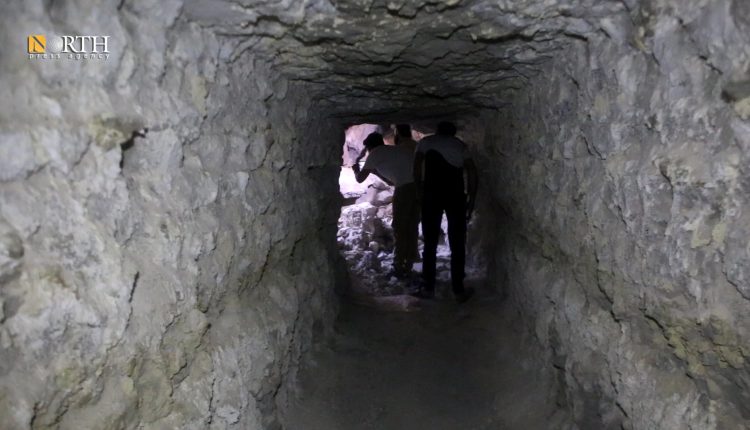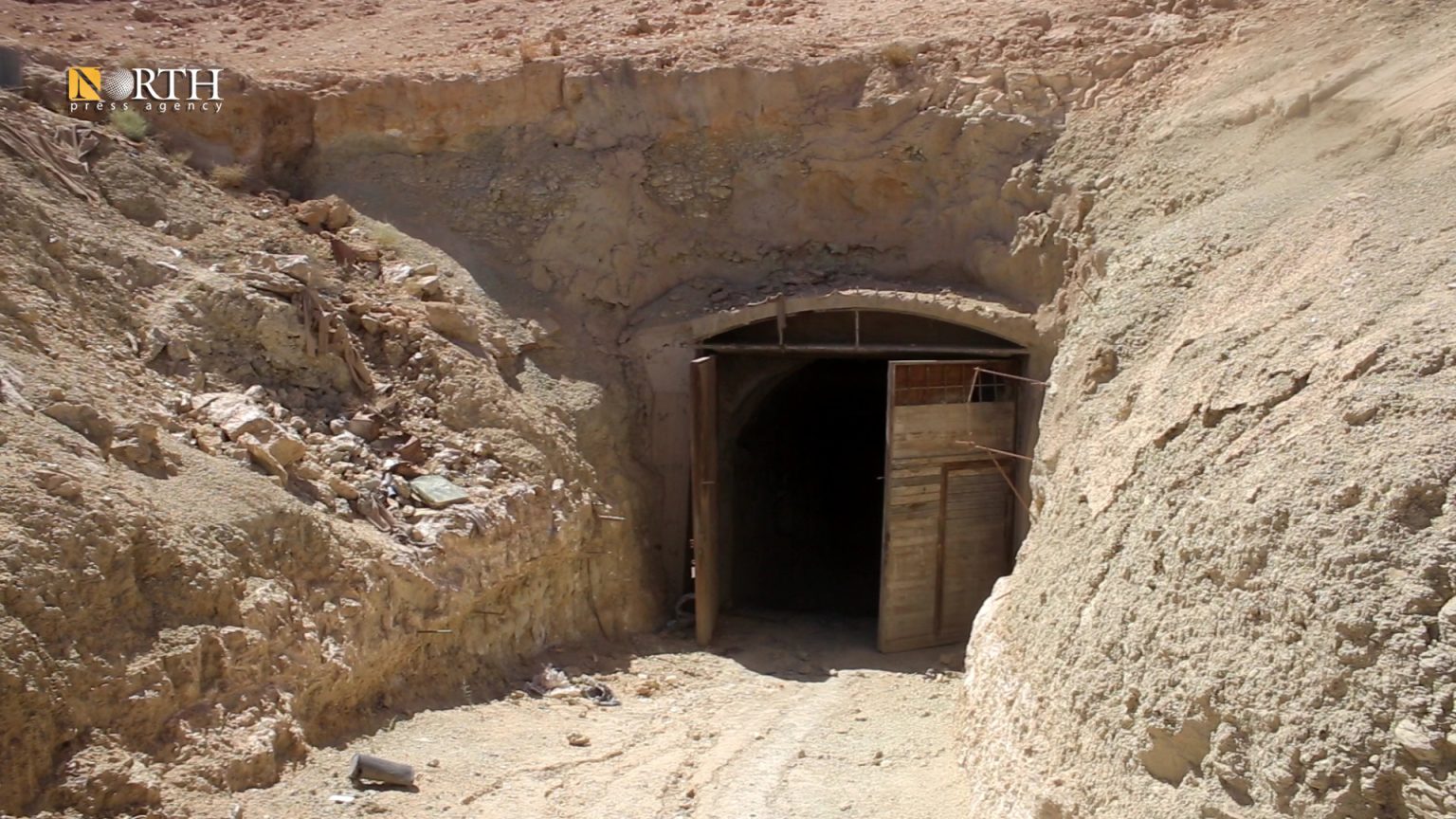
By Ali al-Beki’
DEIR EZ-ZOR, Syria (North Press) – As displaced families begin to return to war-ravaged villages in eastern Deir ez-Zor, eastern Syria, they face a new, hidden threat—networks of underground tunnels built by Iranian-backed militias under homes and public buildings.
Today, following the end of years-long control by these militias, returning residents are discovering extensive tunnel systems, not just military hideouts, but real obstacles to resettlement and a constant threat to the safety of those who remain. This is happening amid a lack of basic services considered essential for survival, according to local residents.
Destruction upon destruction
Matar al-Ahmad, a resident of the village of al-Ghabra near the town of Abu Kamal, told North Press, “I returned shortly before they [Iranian militias] left. They built hesco bastions and dug tunnels. They completely destroyed the village. It is total devastation. They converted the mosque into a Husayniyya and destroyed the school.”
He noted that the tunnels do not stop at open land but extend under people’s homes. “The village has around 250 to 300 houses. But the owners do not dare return because of the tunnels,” al-Ahmad added,
He said residents fear the tunnels may be booby-trapped and that their homes could collapse on them. Until now, no engineering or inspection teams have come. The situation poses a serious threat to children, he warned.

Abdul Razzaq al-Mohammed, another resident from Abu Kamal, told North Press, “The tunnels still exist in the Abu Kamal area. They have been there since the Iranian militias arrived. This poses a threat to the people of Abu Kamal.”
He recalled the continued security threat, saying, “Israeli airstrikes targeted these tunnels. The tunnels were dug inside residential homes. Now, residents are afraid to return to their houses because of them.”
People are afraid to return to their homes, he said, calling on the transitional government to expose and remove the tunnels.
Exhausted villages
Mohammed Abdullah, a resident of the village of al-Ghabra, described the dire situation to North Press, “I can enter a tunnel from my house and come out in my neighbor’s. This is completely unacceptable.”
He gave a bleak description of village life, “There is no electricity or water. The living conditions for residents are extremely poor. We are paying 130,000 Syrian pounds [$13] for just 1,000 liters of water.”
Abdullah expressed concern over demographic changes, citing the conversion of mosques into Husseiniyas by Iranian-backed militias.
“We demand that the authorities find a solution to these tunnels. Solving the tunnel issue must be the top priority,” he said.
He recounted his personal hardship, having been displaced to Damascus and returning only after the Iranian-backed militias were expelled with the fall of the al-Assad regime late 2024.
When Abdullah came back, his house had been completely looted. He had no choice but to live in it despite the tunnels.
He added that the village lacks the most basic services, no schools, no health clinic.
Residents of Abu Kamal and eastern Deir ez-Zor countryside say the real danger is not just in destroyed homes or missing services, but in what lies unseen — a network of tunnels that turned the land into silent traps, suspending the dream of return on a thread of fear and uncertainty.
